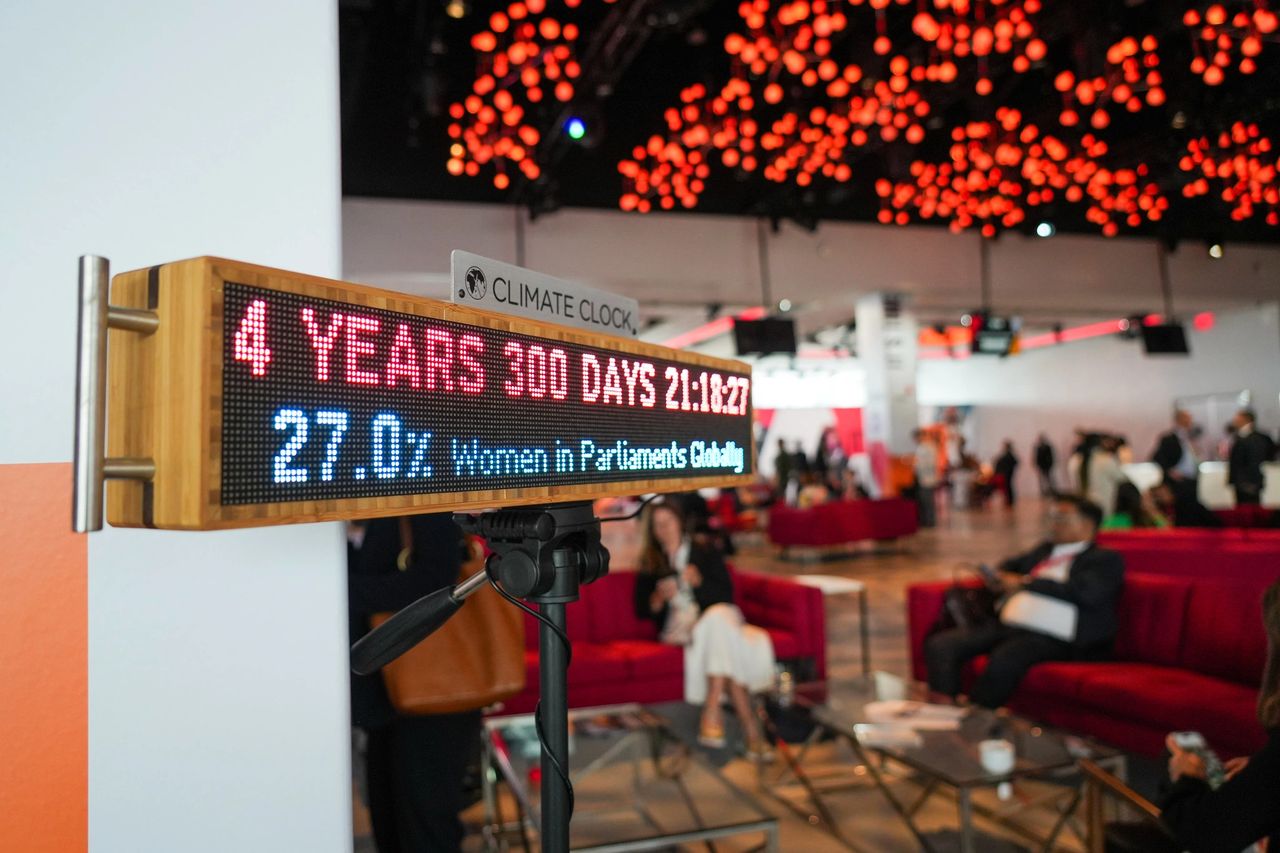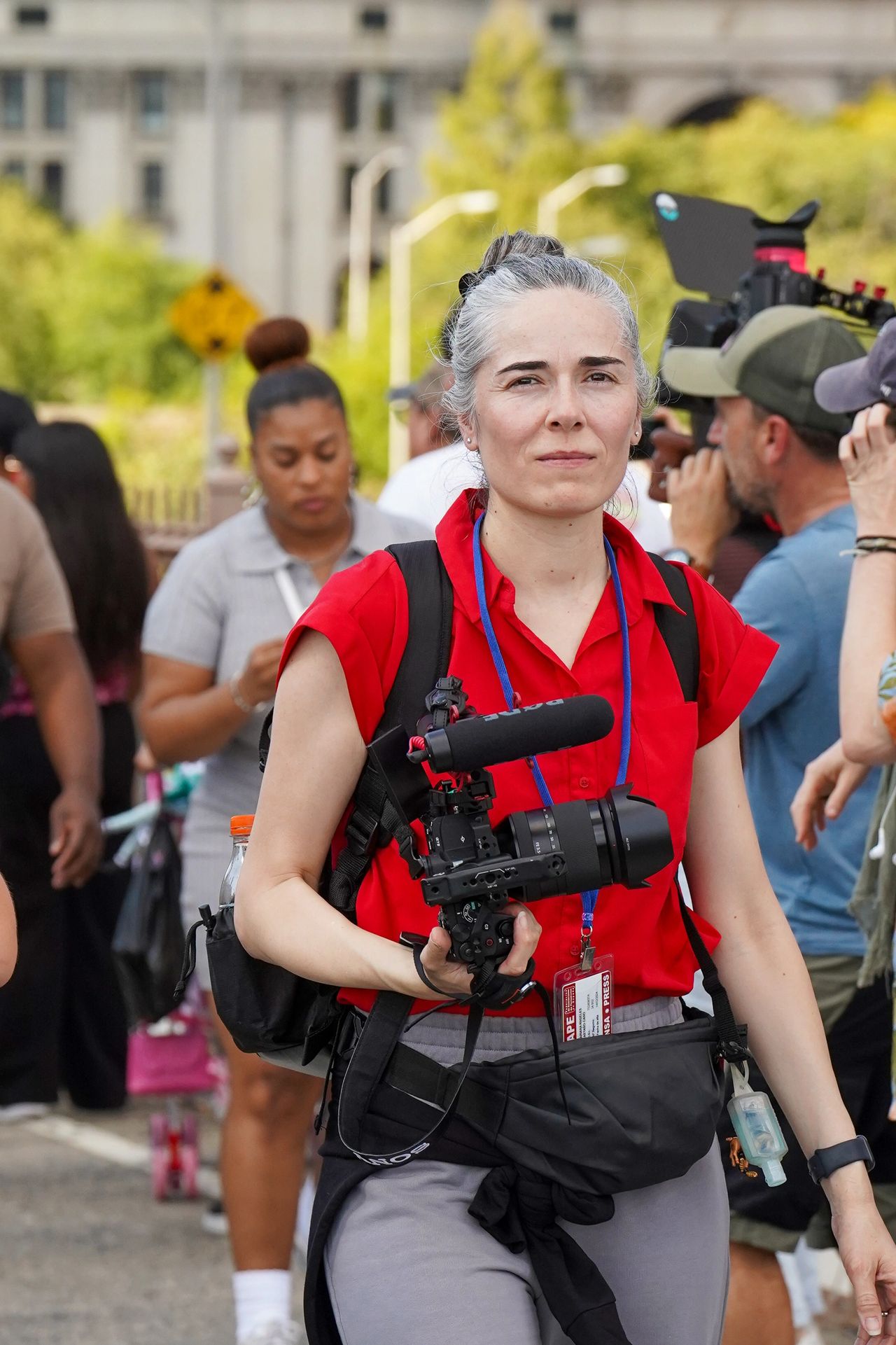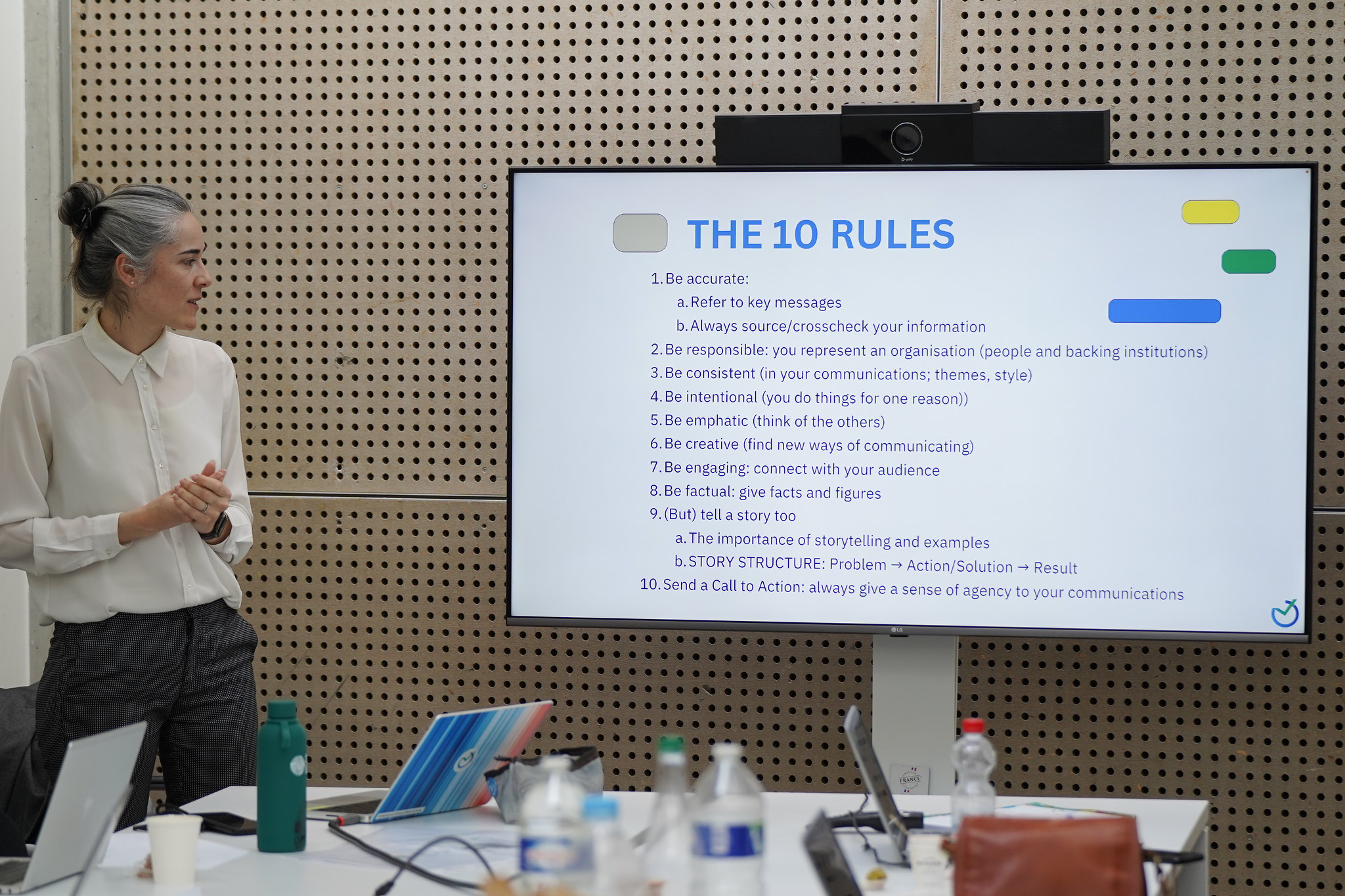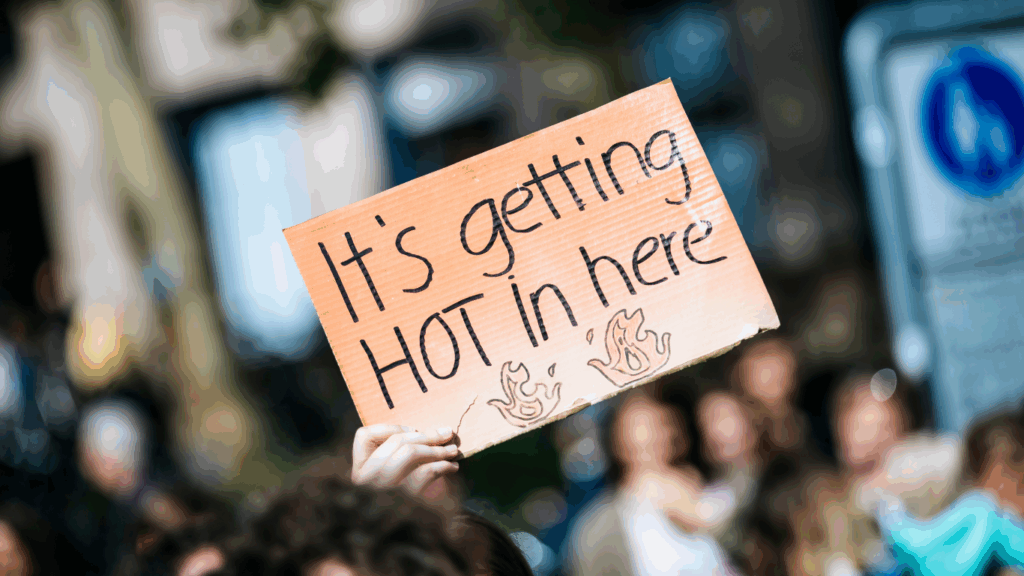One month ago to the hour, I was packing my bags to head to Climate Week NYC and UNGA79. I went, I worked, I returned, and it took me three weeks to process everything I experienced before I could sit down to write my thoughts.
It wasn’t exhaustion or lack of time—although both played a part—that delayed my writing, but rather a profound unrest.
It was the confusion of feeling lost, like the look on the face of a girl I photographed at the Fridays for Future climate march; the least crowded march I can remember at a climate week. Only about a few hundred people, in contrast to the 100,000 people who, according to the organizers, participated in the Climate Week events.
The girl seemed lost to me then, holding her “Stop Climate Change” sign far behind, but today I think she was anything but lost. At her young age, she probably sees things very clearly.
Today, I believe it’s most of us who are lost— us adults who, to varying degrees, bear the responsibility of leaving the world in good shape for these young people and those who will follow.

Having worked for 22 years as a journalist and communicator, always close to the frontline of current events, I’ve never felt such a strong sense of disconnect.
Part of this disconnect is internal, tied to the treacherous feeling of eco-anxiety that often haunts those of us in the climate field, the sensation that we are like the orchestra on the Titanic, playing on until we all drown.
But beyond this intimate feeling, what concerns me most is what I’ve seen, the widespread disconnect I observed in New York among those of us in the “climate industry.”
As bombs continued to fall in Ukraine and Gaza, the Israeli Prime Minister–from New York itself–ordered strikes on Lebanon, as the UN and NGOs were crying foul about the advancements of violence, poverty, hunger, climate disasters, the decline in access to clean energy, the rampant spread of misinformation, and the catastrophe facing non-human life on the planet; while all this was happening and being denounced at the UN headquarters and in a handful of minority civil society events, the dominant narrative from Second Avenue to the Hudson River was one of victory.
The most common sentiment I heard during Climate Week was that “although not fast enough, we are finally moving in the right direction”. A direction where technology, “carbon-free” energy, artificial intelligence, carbon capture, and offsets (for whatever remains) will save us from catastrophe. But the catastrophe is already here.
As editors like to say, “data kills narrative,” and while there are reasons for optimism, such as the progress in renewables, the reality is that exploration for new fossil fuels continues.
Following the stubborn laws of physics, this month we’ve passed the 423 parts per million CO2 in the atmosphere, while the safe limit is 350 ppm.
Emissions continue to rise, and the planet’s exhaustion increases proportionally with the profits of billionaires and multinationals, some of whom also play on the climate board as philanthropists paying for brilliant awards and gala dinners or touting the sustainable virtues of their products on the bright billboards of Times Square, visible to the “decision-makers” who flood the streets of Manhattan on those days.
Yes, renewables are advancing, and they should be advancing much more, but the energy they produce is still not enough to satisfy new demand and the voracity of current levels of demand and waste.
Let’s be realistic without losing hope, but let’s not fall into the trap of promoting at all costs a solutionist narrative to balance the supposedly catastrophist narrative, because let’s not forget data is stubborn and, while we need optimism and hope, the last thing we need is toxic positivity and spinning the narrative so far that we lose touch with the ground.
We have reasons to be pleased because our events went well or our campaign has many clicks; we genuinely rejoice at seeing each other every year in Manhattan or at the COPs; we feel that we are doing our job well because the audiences grow, we achieve funding, and our LinkedIn posts are breaking the internet, etc. All this matters a great deal because we are effecting change as we go, but let’s not go overboard beautifying the narrative. The world is as it is, in bad shape. And it’s even worse for the vast majority, who we, as the privileged segment of society that we are, probably only see on our phone screens or as numbers in UN and NGO reports.
We will continue patching up a sinking boat unless we opt for solutions that have social justice and ecological balance as their ultimate aim. Necessarily, these solutions involve stopping the production and consumption of products we surely do not need, however much they come in recycled packaging. These solutions also include stopping activities that are not essential however much they are 50% less polluting than the competition.
Until we become aware of the planet’s physical limits and the material footprint of our activities, until we turn the page on growth as an indicator of progress; we will not be on our way out of the crisis or alleviating the drama that millions of people face every day in the world.
My main takeaway (as we like to say on such occasions) from Climate Week 2024, is that there will be a before and an after for 10 Billion Solutions in 2025. The future will be marked by a narrative closer to reality, intellectually and emotionally more honest, and fairer to the vast majority of humans and non-human life on the planet.
It will not be a triumphalist and narcissistic narrative, but rather a realistic one focused on solutions while acknowledging the causes of the world’s problems. This narrative will, when necessary, name those who are benefiting from what is going wrong in the world. It will be a narrative certain to burst the bubble in which those of us working on climate and sustainability have become ensconced.
With honesty, imagination and dialogue, let us build climate narratives of reconnection with the world beyond the bubble.





